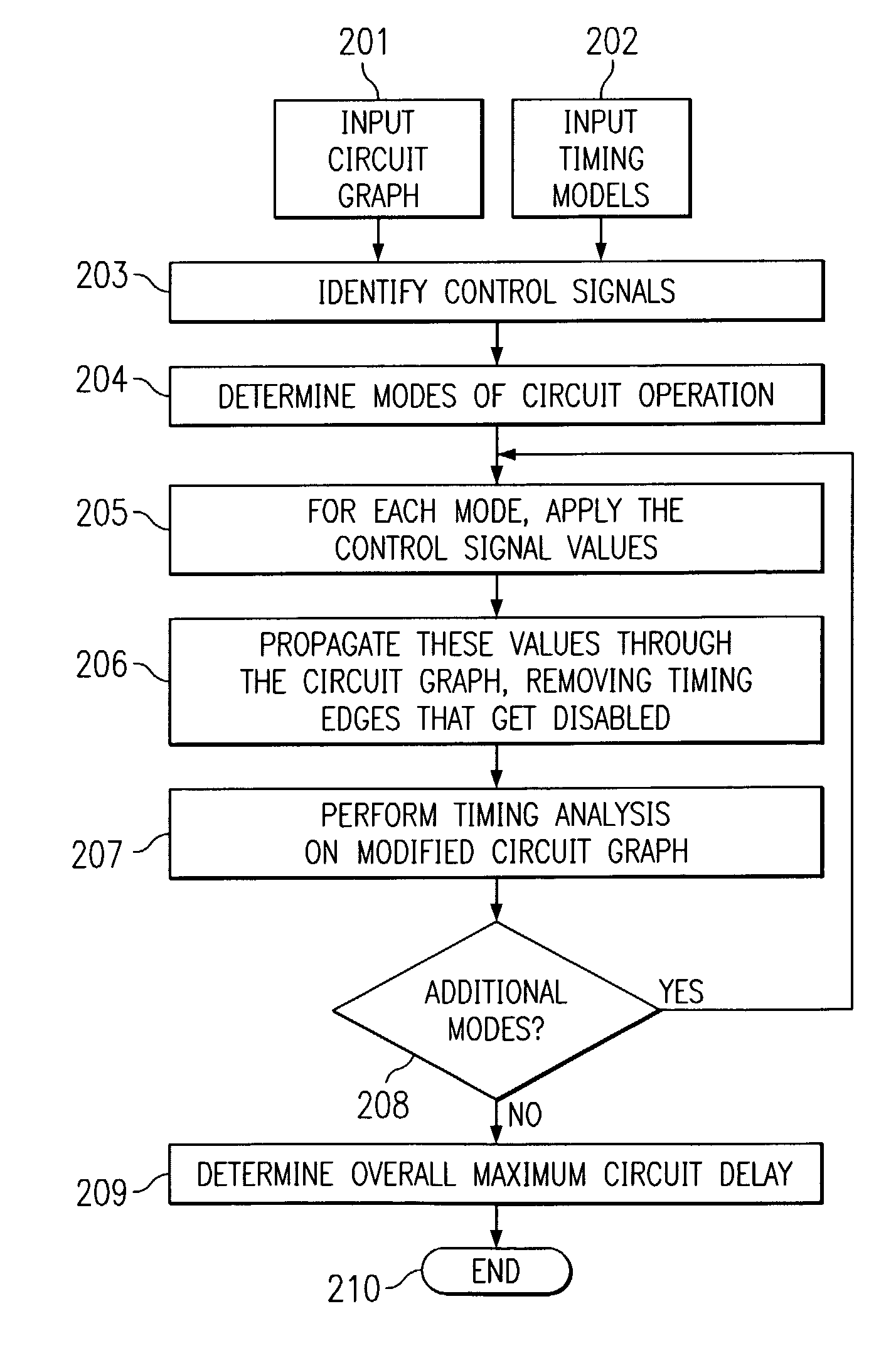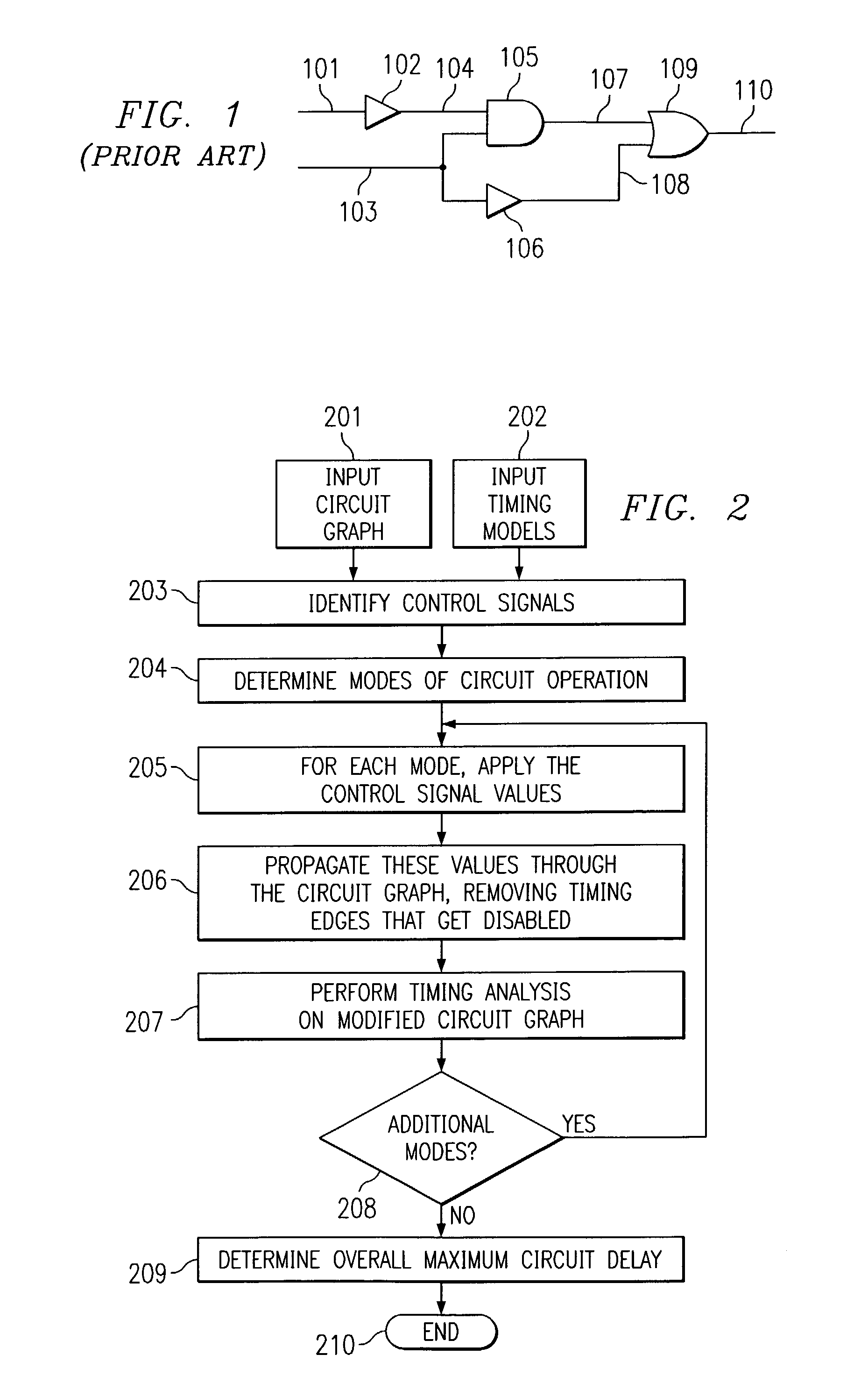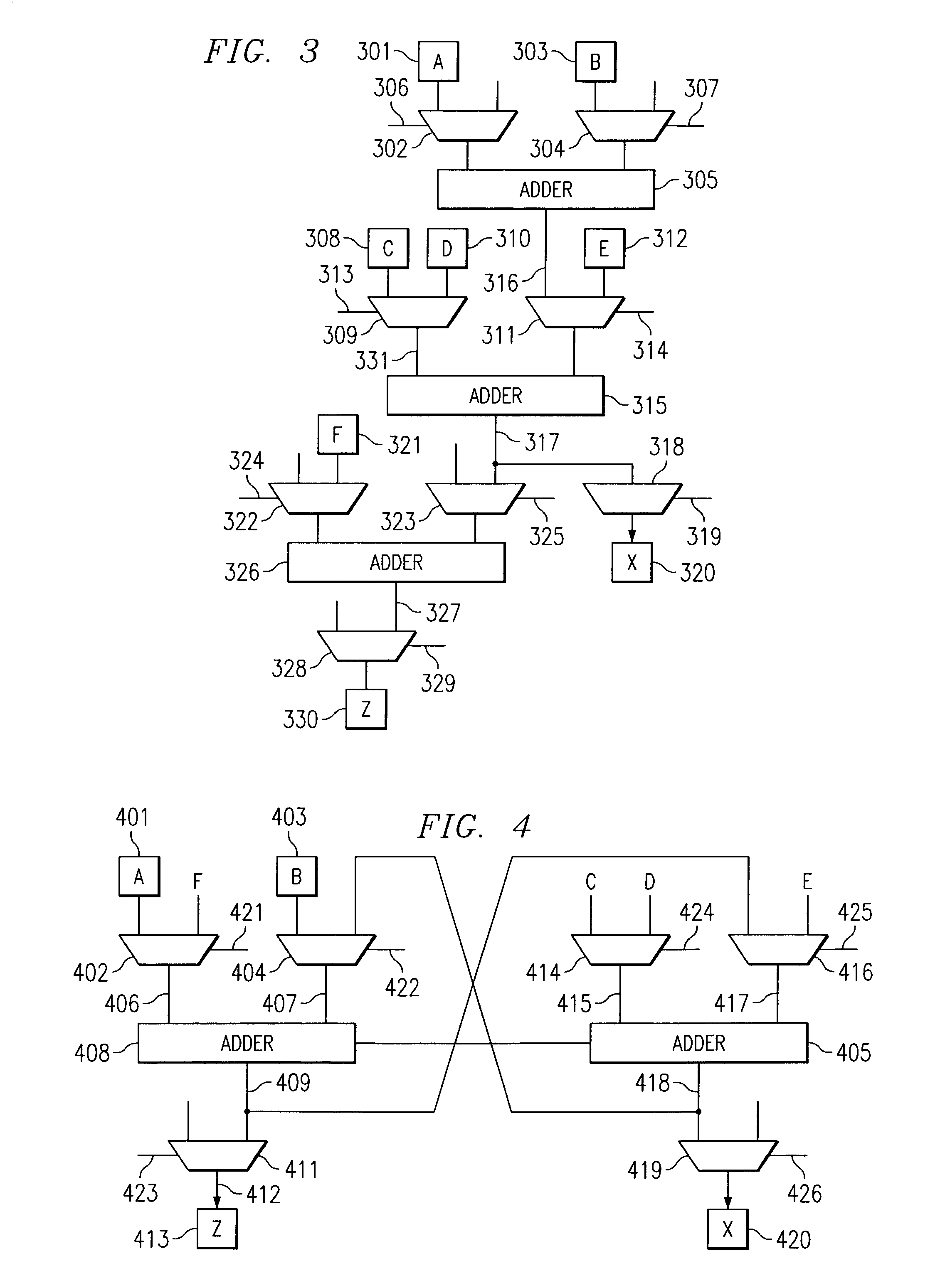System for and method of clock cycle-time analysis using mode-slicing mechanism
a clock cycle and mode-slicing technology, applied in the direction of program control, generating/distributing signals, instruments, etc., can solve the problems of over-estimating the maximum circuit delay, inability to handle combinational loops, and inability to guarantee the input stimuli that have not been simulated
- Summary
- Abstract
- Description
- Claims
- Application Information
AI Technical Summary
Problems solved by technology
Method used
Image
Examples
Embodiment Construction
[0021]FIG. 2 is a flow diagram of an embodiment of the present invention for performing timing analysis of a digital circuit by a mode-sliced method. The flow diagram of FIG. 2 shows the provision of two inputs associated with respective input steps: input circuit graph step 201, and timing models input step 202. Input circuit graph step 201 includes providing descriptions of circuit components and the interconnections between the components of the digital circuit. A component is considered to be a hardware element that performs a set of one or more functions or operations. Muliplexers, registers, AND gates, adders, and subtractors are examples of components. The functionality of the component is also received in step 201. Interconnections refers to wires or other signal conductors that are capable of transporting data values (or signal values) in the form of electrical signals, from one point to a second point.
[0022]In step 202 timing models are received. Timing models are received...
PUM
 Login to View More
Login to View More Abstract
Description
Claims
Application Information
 Login to View More
Login to View More - R&D
- Intellectual Property
- Life Sciences
- Materials
- Tech Scout
- Unparalleled Data Quality
- Higher Quality Content
- 60% Fewer Hallucinations
Browse by: Latest US Patents, China's latest patents, Technical Efficacy Thesaurus, Application Domain, Technology Topic, Popular Technical Reports.
© 2025 PatSnap. All rights reserved.Legal|Privacy policy|Modern Slavery Act Transparency Statement|Sitemap|About US| Contact US: help@patsnap.com



